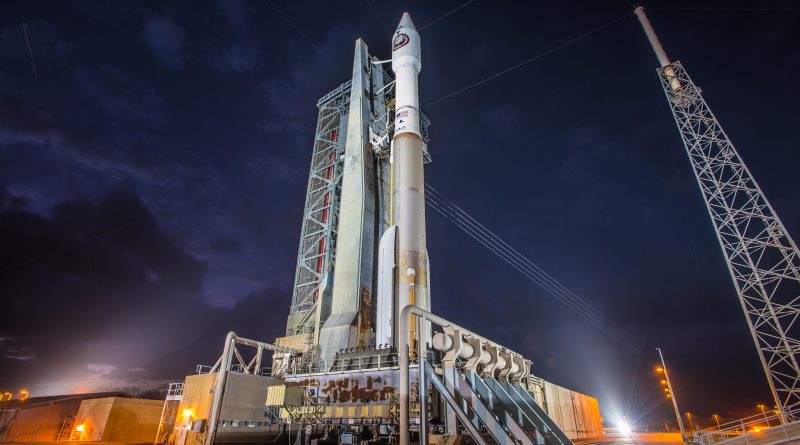Delay to Saturday – Florida Weather Holds Up Classified Atlas V Launch with NROL-52
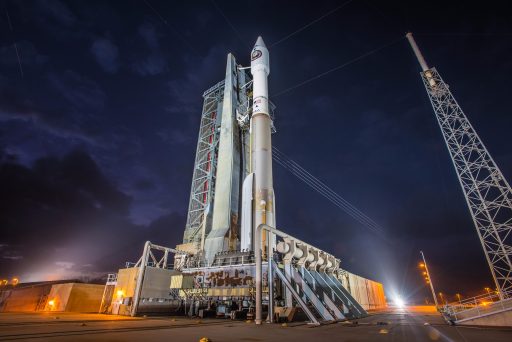
Update (Oct. 6): The launch of ULA’s Atlas V rocket was delayed again Friday morning due to uncooperative weather at the Cape Canaveral launch site with violations of lightning and cloud rules. ULA is preparing for a 24-hour recycle and is working to a re-aligned T-0 of 7:59 UTC on Saturday, 3:59 a.m. local time.
The launch of a classified satellite operated by the U.S. National Reconnaissance Office has been rescheduled for Friday after strong winds at the Cape Canaveral Launch Site prevented the Atlas V rocket to complete fueling operations for a launch attempt Thursday morning. Friday’s launch window opens at 8:03 UTC, though weather is expected to remain a concern with only one-in-three odds of cooperative conditions.
The secretive NROL-52 mission is the second in back-to-back launches for the National Reconnaissance Office, following up on the launch of an Atlas V 541 from California on September 24 with the NROL-42 satellite, deployed into a highly elliptical orbit to join a fleet of signal intelligence spacecraft providing optimized coverage for the high-latitude regions. NROL-52 will be aiming for a Geostationary Transfer Orbit from where it will spiral up into GEO, in all likelihood joining the Satellite Data System – a constellation of secure communications satellites tasked with relaying reconnaissance data from lower-orbiting satellites to their operators in real time.

Although the National Reconnaissance Office goes through great lengths to keep its activities secret, the identities of its satellites can usually be revealed through clues like their launch vehicle configuration, ascent trajectory and activity in orbit monitored by the amateur satellite tracking community. NROL-52 can be identified with a fairly high-degree of certainty as belonging to the fourth generation of the Satellite Data System (SDS) as the mission appears to be a repeat of the NROL-61 launch of 2016 that also used an Atlas V 421 rocket out of Cape Canaveral and deployed a single payload into Geotransfer orbit.
NROL-61 and 52 are the only NRO missions to date using the 421 version with an Extra-Extended Payload Fairing and the timing of their launches matches the typical replacement cadence for SDS. However, final confirmation of NROL-52’s identity will come after satellite trackers spot the satellite in its operational orbit and confirm its position within the existing SDS constellation.
The Satellite Data System, operating under the code name Quasar, was inaugurated in 1976 and has since gone through four generations, initially operating from highly elliptical Molniya Orbits that allow for optimized coverage over the northern hemisphere.
>>Identifying the Classified NROL-52 Satellite
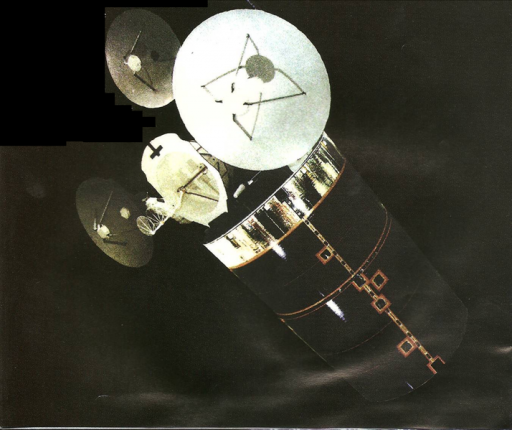
With the second generation, SDS began operating satellites in Geostationary and Molniya orbits, a pattern that continued into the third generation until the replenishment of Molniya satellites stopped around 2007 – indicating SDS moved to a pure-GEO-based system. The use of the more powerful Atlas V 421 rocket for NROL-61 and 52 suggests the satellites have gained mass as SDS moved into its next generation, in line with the use of the larger Extra-Extended Payload Fairing to fit larger satellites.
The Satellite Data System is similar in architecture to NASA’s Tracking and Data Relay Satellite System in that a number of satellites in Geostationary Orbit act as communication hubs – relaying commands from the ground to lower-orbiting satellites and routing data from satellites to their operators to achieve a real-time relay capability for the entire orbit of a satellite. SDS provides real-time relay from the Keyhole imaging satellites, radar reconnaissance missions and other intelligence-gathering and technology satellites. Additionally, SDS connects Air Force Satellite Control Network ground stations and relays communications from Air Force aircraft.
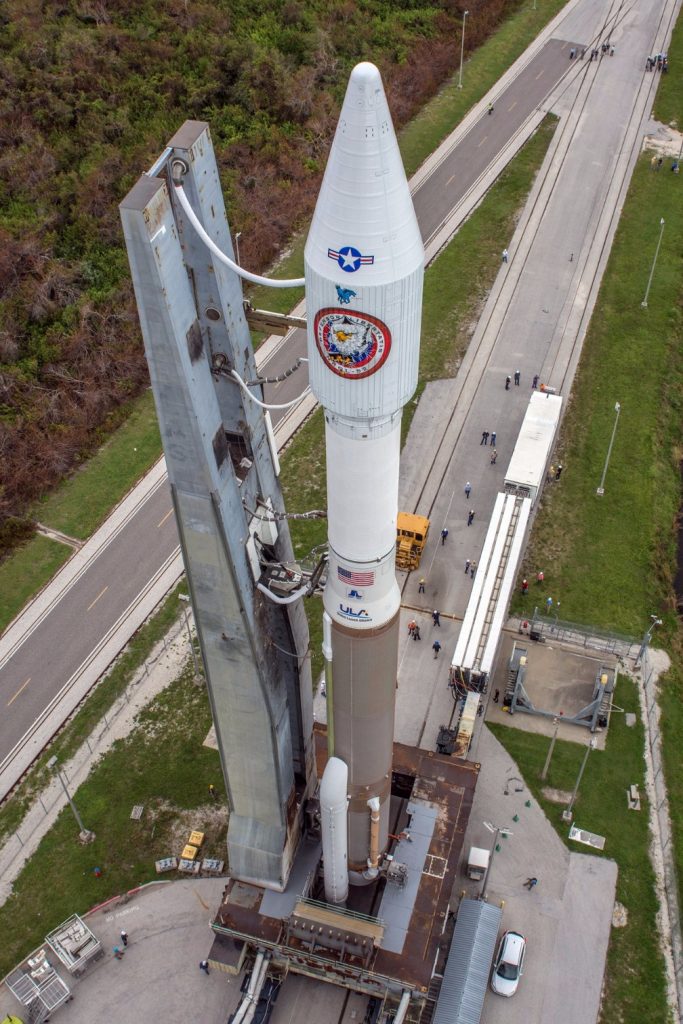
Setting the stage for the fourth NRO mission in 2017, the 60-meter tall Atlas V rolled out to its Space Launch Complex 41 launch pad on Tuesday and stood ready for a lengthy countdown operation picking up in the evening hours on Wednesday. The early portion of the countdown went by the book with detailed checkouts of the Atlas V rocket and final hands-on work at the pad to get ready for the tanking operation once picking up the count from a scheduled hold at T-2 hours.
However, by this point, ground winds at the Cape had picked up and were hovering right around what is allowed for initiating tanking operations. As a result, the T-2-hour hold was extended to allow a band of rain with high wind conditions to move over the pad. An attempt at getting into tanking operations was made and Liquid Oxygen flow to the Centaur Upper Stage started before the launch team was advised that another band of rain was on approach.
Atlas V was moved back into its high-pressurization state, using the internal tank pressures to stabilize the vehicle in the interest of risk reduction. Shortly after that, the launch was scrubbed for the day and teams went into safing operations for a 24-hour turnaround.
Friday’s launch time was announced as 4:03 a.m. local time, 8:03 UTC. Weather remains a major factor for the mission with only a 30% chance of acceptable conditions for Friday’s launch window, looking at increased shower activity and breezy winds with primary concerns being violations of the cumulus and thick cloud rules.
Countdown & Launch Sequence
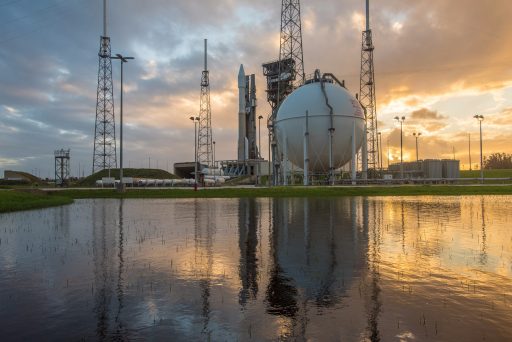
AV-075 is flying an Atlas V 421 configuration, comprising the typical two-stage stack with a Common Core Booster serving as first stage and the trusted Centaur sitting atop with two AJ-60A Solid Rocket Boosters providing extra thrust in the initial flight phase and a four-meter Extra-Extended Payload Fairing protecting the classified satellite. Overall, the vehicle stands 60 meters tall, has a core diameter of 3.81 meters and weighs in at 428 metric tons, capable of lifting 5,300 Kilograms into a Geostationary Transfer Orbit.
Picking up seven hours before launch, countdown operations will initially move through a long checklist to power up the Atlas V launch vehicle and test its various subsystems while engineering teams finish close outs at the launch pad.
The count will hold at T-2 hours for the final setup steps ahead of propellant loading that begins as soon as the countdown resumes from T-2 to feed 185,500 liters of -183°C Liquid Oxygen to the Common Core Booster first stage while the Centaur upper stage receives 15,700 liters of LOX and 48,100 liters of Liquid Hydrogen, stored at -253°C. The booster received its supply of 94,600 liters of Rocket Propellant 1 after rollout, leaving only cryogenic to be loaded during the count.
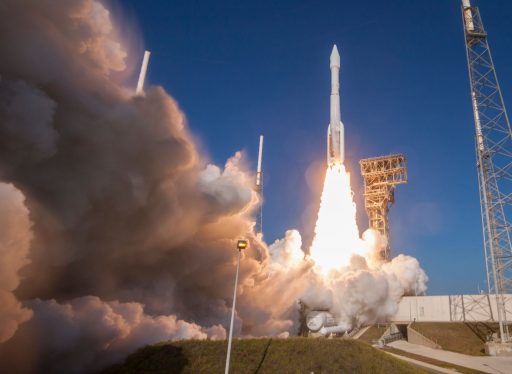
When clocks reach T-4 Minutes, the countdown enters its second built-in hold for final polling of the launch team prior to pressing into Terminal Count that comprises the critical computer-controlled events to transition Atlas V to an autonomous launch configuration.
The Russian-built RD-180 engine will start breathing fire three seconds ahead of liftoff, putting out a whopping thrust of 392-metric ton force. Atlas V will catapult off its launch pad once the twin boosters light up, pushing uphill with a total thrust of 734,700 Kilogram-force. Within seconds of lifting off, Atlas begins its pitch and roll maneuvers to head east-south-east on a ~99° launch azimuth, passing Mach 1 just 47 seconds into the flight with Maximum Dynamic Pressure following five seconds later.
The twin boosters burn out at T+94 seconds, but will be held by the vehicle until T+2 minutes and 9 seconds to ensure a safe separation in benign aerodynamic conditions. Continuing uphill powered by the RD-180 alone, Atlas V will cross the boundary of space and begin throttling back to limit stress on the vehicle when approaching Main Engine Cutoff – expected at T+4 minutes and 10 seconds. Six seconds after MECO, the Common Core Booster will be jettisoned to clear the way for the trusted Centaur to assume control of the flight.
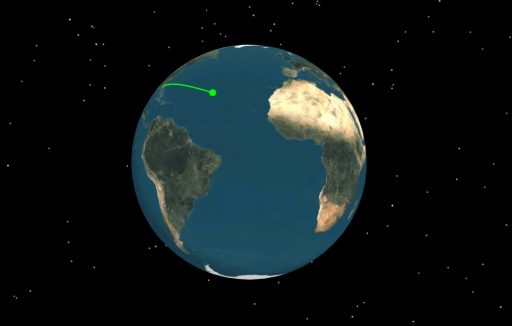
Centaur will light its RL-10C main engine ten seconds after staging, soaring to a thrust of 11 metric ton-force to lift the stack into an initial Low Earth Parking Orbit. Four minutes and 34 seconds into the flight the protective Payload Fairing will be jettisoned, marking the end of the public launch broadcast as NRO missions fly into a pre-arranged News Blackout to allow the payload to enter a classified orbit.
Per the NROL-61 launch, Centaur is likely to employ a two-burn ascent profile with an initial boost into an elliptical Low Earth Parking Orbit peaking over 1,000 Kilometers in altitude for a coast phase of under one hour in order to gain altitude in the elliptical orbit. The second burn will boost the apogee of the orbit and reduce its inclination to achieve a Geotransfer injection. Based on NROL-61, Satellite Analyst Ted Molczan expects NROL-52 to show up in an orbit around 1,100 by 35,800 Kilometers, inclined 18.7°.
The Centaur upper stage will be tasked with a retrograde deorbit maneuver a little over an hour into the mission to set it up for destructive re-entry over the Pacific Ocean, south of Hawaii.

